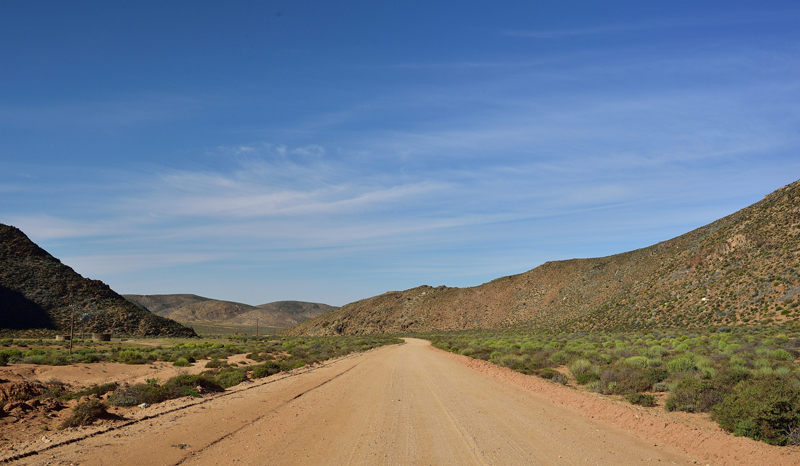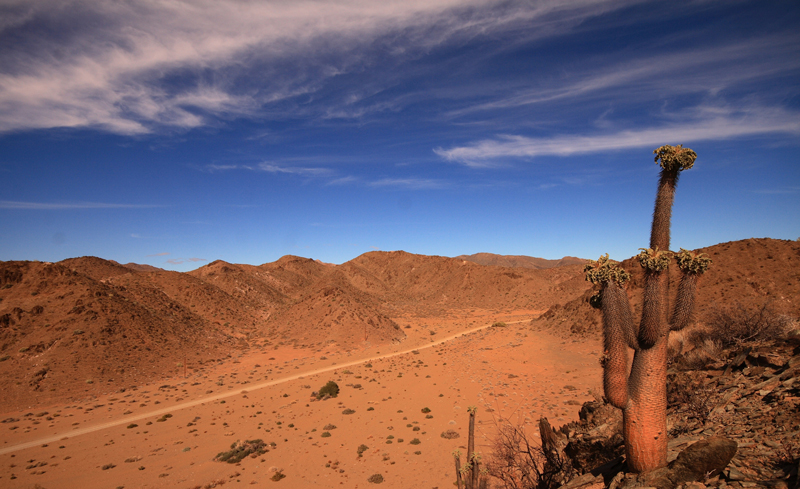Indulge your inner adventurer with the WWF Desert Challenge
In eight adventure-packed days, you can conquer the desert. Starting on 15 October, the World Wildlife Fund (WWF) Desert Challenge takes place through the /Ai/Ais Richtersveld Transfrontier Park spanning Namibia and South Africa.
Not for the faint hearted, those who take part will cycle, hike, paddle and abseil in the wilderness.

Dirt roads await WWF Desert Challenge participants who will cycle, hike, and paddle, in the Richtersveld Transfrontier Park. (Image: South African Tourism, via Flickr, CC BY 2.0)
Entries are limited to a maximum of 20 people. DJ Hewson will be one of those people. He’s won an entry to the challenge from South African Airways’ (SAA) Voyager Loyalty Programme.
So, what is it exactly?
This challenge, says the WWF, requires the highest levels of fitness and good health.
“Participants should be able to run a half marathon in under two and a half hours, be comfortable on a mountain bike at the level of gravel roads, be able to paddle a kayak and willing to abseil with assistance from professionals,” the organisation says.
The first day includes a 36km cycle on gravel roads, the second a 20km hike, and abseiling. By the fourth day, participants take to the Orange River for a 21km paddle. The subsequent days are followed by further hikes and cycling, progressing to the final destination, the /Ai/Ais Hot Springs Resort.
A detailed itinerary can been seen here.
No looking back

Kate Black, a writer in Cape Town, describes the Richtersveld Transfrontier Park in South Africa as magnificent. (Image: South African Tourism, via Flickr, CC BY 2.0)
Kate Black, a writer in Cape Town, says she was compelled to find out more about the challenge when she heard about it. Now, she is hooked.
She describes it as a “once-in-a-lifetime opportunity to explore isolated areas that couldn’t otherwise be explored”.
“These areas are not on the tourist trail. They are completely wild and untouched. You are one of the first. And though the landscape may look and feel barren, it holds an exciting, thriving ecosystem, abundant with wildlife and some of the richest succulent flora in the world.”
Black describes the Richtersveld as magnificent and considers it a privilege to see it with such immediacy during the challenge.
There’s more to see than only sand
The /Ai/Ais Richtersveld Transfrontier Park spans South Africa’s border with Namibia. It is home to some of the most spectacular scenery of the arid and desert environments in Southern Africa.
Bisected by the Orange River, it comprises the /Ai/Ais Hot Springs Game Park in Namibia, and the Richtersveld Park in South Africa. Distinctive features include the Fish River Canyon – often likened to the Grand Canyon in the US – and the /Ai/Ais Hot Springs.
Sporadically dotted across the Richtersveld are peculiar looking trees, known in Afrikaans as halfmens, translated in English to half-man. It has a broad branch with a head of leaves, resembling a human silhouette from a distance. This succulent’s scientific name is pachypodium namaquanu.
Each of these trees face north, and scientists believe it is so the leaves get as much exposure to the sun as possible during winter. The local Nama people, however, believe it is a symbol of their ancestors – who were driven to the Richtersveld region by conflict – longingly gazing back to their homeland.

The halfmens, Afrikaans for half-man, tree is one nature’s peculiar sites to see while taking part in the WWF Desert Challenge. (Image: Javier Ábalos Alvarez, via Flickr, CC BY-SA 2.0)
“From July to September/October the halfmens erupts in a cluster of red and green tubular flowers so as you huff, puff or pedal by, remember to keep an eye out for that strange, stooped figure, trudging up the slopes,” writes Black on the Desert Challenge blog.
Despite the extreme desert climate, many animals have managed to survive. Lizards, snakes, ground squirrels, various buck species, the African wildcat, monkeys, brown hyenas, and more could all cross your path during the challenge. So, keep your eyes peeled.
Words and research: Priya Pitamber


